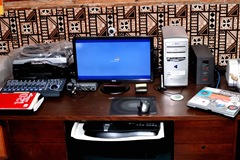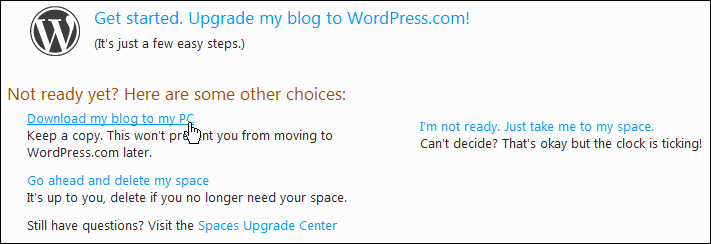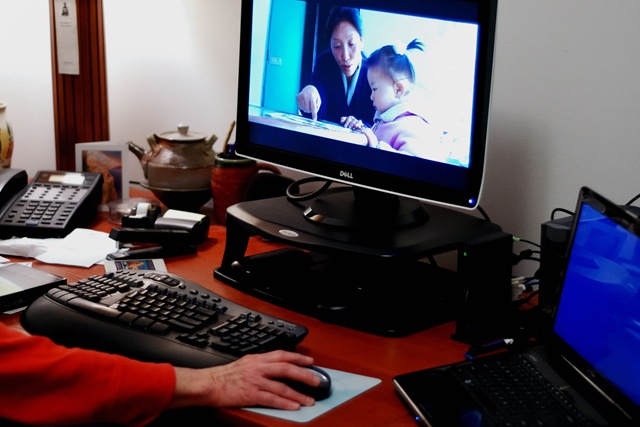 I have a serious itch to move from Scampo to a fire-breathing multi-core Windows 7 development platform.
I have a serious itch to move from Scampo to a fire-breathing multi-core Windows 7 development platform.
Although I have my eye on some contenders (basically a hot Dell XPS 9100 or its comparable Alienware Aurora configuration), I must resist making the jump. Although I will likely upgrade before the end of 2010, there are some things I need to keep my eye on.
Core Scampo Functionality
Before I cut loose from Scampo, I must remember that there is on-going use of this Gateway 831GM Media Center PC running Windows (Media Center) XP SP3. As much as I want to be on Windows 7 and desire to be able to upgrade to tools that are no longer supported on Windows XP, there is some baggage.
- An E-MU 1820M that I need to move to Windows 7 Ultimate 64-bit (and there are new drivers available, and Cakewalk Sonar will support the 64 bit operation). I must make sure that the upgrade has slots and connectors for the 1820M PCI boards.
- My Hewlett-Packard ScanJet 7400C, although a little long in the tooth, is still my primary scanner and it will need to run on the upgrade (name yet to be chosen).
- Battery Backup may need upgrading to handle the 550-850 watt power-supply, depending on configuration. Apparently, some of the higher-performance machines will see spikes on backup kick-over and shut down. That is an additional problem, as well as making my office setup provides enough power through the outlet cluster my computing equipment is dedicated on.
 Gigabit Ethernet? A router/hub upgrade to provide Gigabit Ethernet connectivity to the Windows Home Server might be wise. The greater capacity of the new development engine, with multiple virtual machines for interoperability testing and confirmation of software porting on multiple platforms may stress the WHS capacity. There may need to be some upgraded drives and perhaps even an upgraded WHS machine.
Gigabit Ethernet? A router/hub upgrade to provide Gigabit Ethernet connectivity to the Windows Home Server might be wise. The greater capacity of the new development engine, with multiple virtual machines for interoperability testing and confirmation of software porting on multiple platforms may stress the WHS capacity. There may need to be some upgraded drives and perhaps even an upgraded WHS machine.
- Although not part of the initial upgrade, the desire is to eventually upgrade from 24” to a larger monitor (at least 27” but 30” preferably) once they are more affordable and Energy Star compliant. The upgrade will have the graphics power necessary for that and for multiple monitors, even if the completion of upgrading is later.
Obsolescence Staging
Although I want to deal with fundamental system configuration and upgrade issues, there are also problems of preserving in-progress project and dealing with my current dependence on software that will have to be changed-out as part of platform upgrading.
- Microsoft Money is now on life support. I still use it and have not migrated to Quicken. I doubt that the version I have will run very well on Windows 7 (although it might on the Windows XP VM that will be provided). I need to be prepared to do a financial software migration along with or prior to pulling the plug on Scampo.
 Microsoft FrontPage and web-development Issues. It appears that Microsoft FrontPage and FrontPage extensions don’t operate properly between a
Microsoft FrontPage and web-development Issues. It appears that Microsoft FrontPage and FrontPage extensions don’t operate properly between a  Windows 7 system and a Windows XP SP3 machine running IIS and the FrontPage extensions. This may also be related to issues with regard to Visual SourceSafe integration. There is a long-overdue retirement of Compagno that moves the IIS development web to WHS, moves VHS support, and then moves from FrontPage use to Windows Expression for continuing web development. I can’t stop web development using Windows XP SP3 until I accomplish that transition. It will be an eventful November-December 2010 because of this issue alone.
Windows 7 system and a Windows XP SP3 machine running IIS and the FrontPage extensions. This may also be related to issues with regard to Visual SourceSafe integration. There is a long-overdue retirement of Compagno that moves the IIS development web to WHS, moves VHS support, and then moves from FrontPage use to Windows Expression for continuing web development. I can’t stop web development using Windows XP SP3 until I accomplish that transition. It will be an eventful November-December 2010 because of this issue alone.
- Microsoft Office 2007/2010 Upgrading. Because I run two copies of Outlook, one on desktop, one on laptop, I must have the same version of Microsoft Office, with Outlook, on both machines so I can move my .pst files back and forth. I am on Office 2007 now, but my Windows XP SP3 Tablet PC does not handle Office 2010 well enough for me to do a synchronized move to Office 2010. It is also a pain to run multiple versions of Office on the same platform, another reason why I want to have a VM-capable development machine.
I need to be running 2010 and beyond for interoperability testing purposes, but I will have to stay on Office 2007 as my working installation simply because of the need for Outlook parity. At some point I would like to have a single PST that is on the traveling machine, but I can use it from the desktop when I am in the office. If I keep the PST on the traveler, using it in the office by remote-desktop is an option but it may not go quite so well with the degree that I use copy-and-past between Outlook and other applications. A weird but promising solution would be to run Exchange server on a future traveling replacement for my current Tablet PC, and then I would have full Outlook access to it locally and from my office desktop when I’m at the home office.
There are probably more considerations and setbacks I have to deal with. But this is enough top-level to serve as a reminder that I can’t just throw a switch and have a shiny new high-performance development system up and running. I must address the staging issues. And I shall.





 I don’t know what happened between
I don’t know what happened between 


 When I was acquiring the domains for the
When I was acquiring the domains for the 

